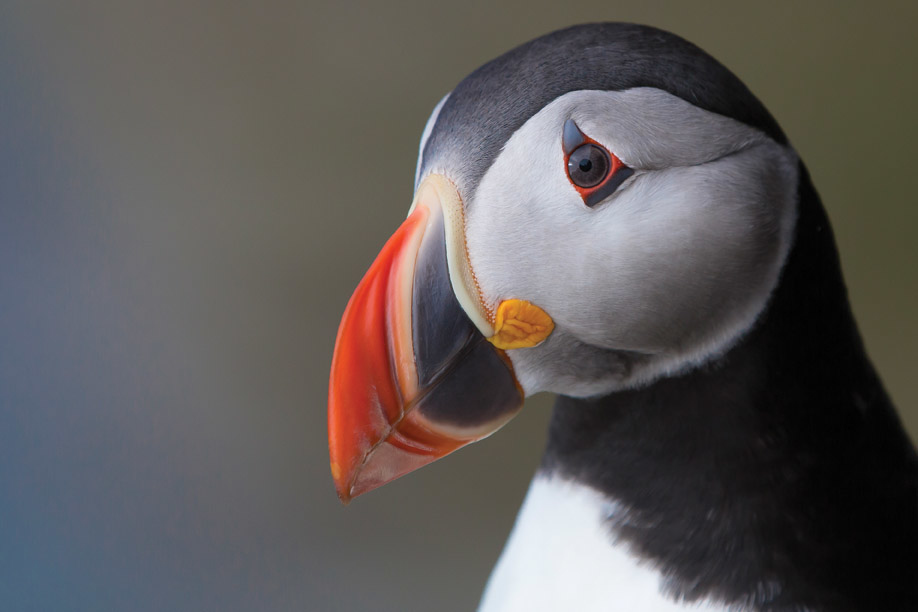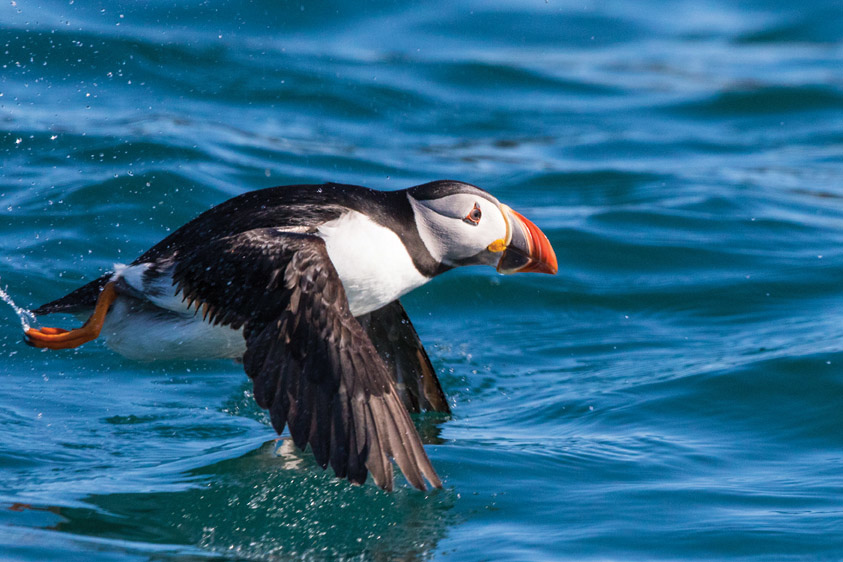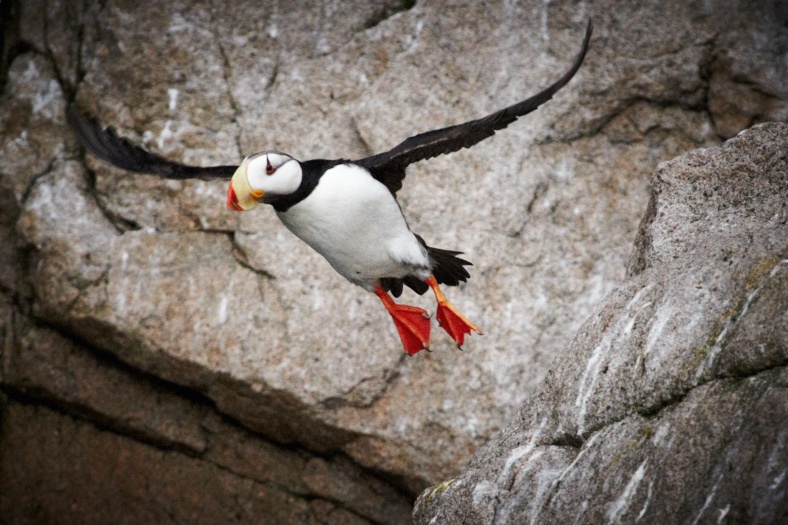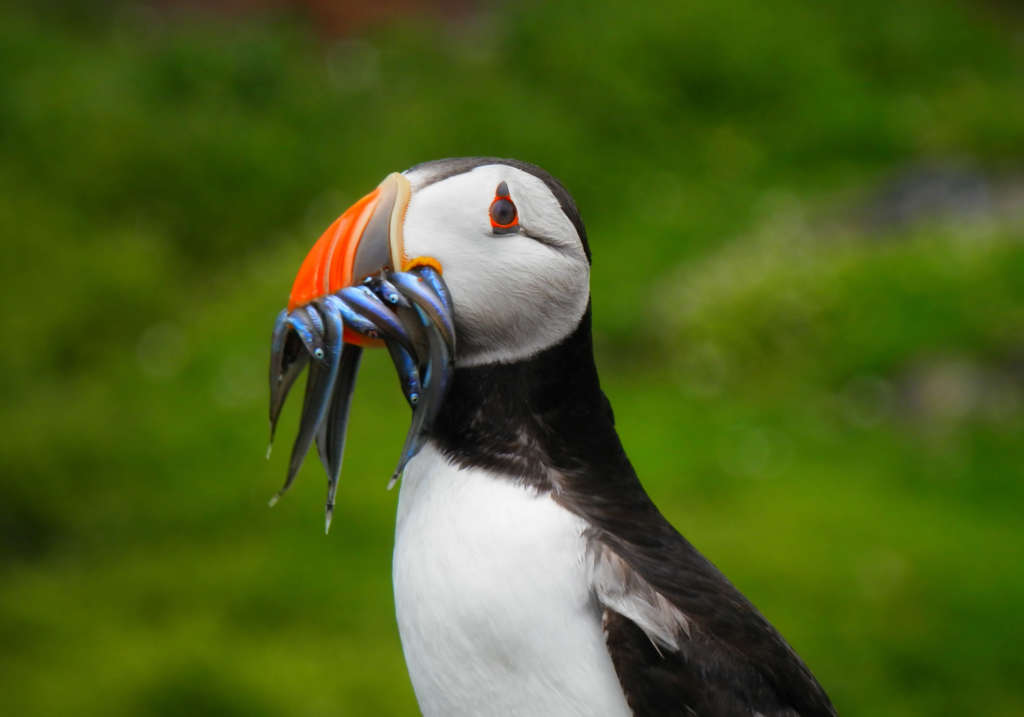Getting ‘Puffed’ up about Puffins

by Noah Patton
There are three species of Puffin in the world, the tufted puffin and horned puffin are found throughout the North Pacific, while the Atlantic puffin is found in the North Atlantic. Puffins are known for their strange experience, particularly their bright colourful beak which contrasts strongly against their black and white plumage. The Atlantic puffins are regarded as one of the cutest species of bird on a planet, owing to their clownish cross appearance between a duck and a penguin.

Their distinct beak is a seasonal feature of puffins. The colourful outer shell of their bill is grown in preparation for their breeding season, when this season is up, they shed the outer shell leaving a much smaller, uncoloured beak. Depending on the species of puffin their breeding habits will vary slightly, but all species of puffin build a nest inside a rabbit-like burrow. Puffins will form a long-term relationship with their partner, often for life, who they will breed a single egg with each year. This egg hatches into a puffin chick, nicknamed ‘pufflings’. After fledging the puffling will spend a few years at sea, returning to breed once it has matured into a proficient hunter. [1]

Like most seabirds, puffins primarily eat fish and plankton. They dive underwater, catching the fish in their sharp bills. But unlike most seabirds, puffins do not regurgitate fish to feed their chicks, instead their uniquely hinged bill enables them to hold several fish horizontally in their bill. The bill meets at several different edges, creating multiple ‘pockets’ in which the fish can fit. [2]

Puffins are hunted by humans for their eggs, feathers and their meat. Their populations have declined significantly across the last few centuries due to significant exploitation, and they still are hunted to this day due to a lack of legal protection. The puffin itself forms a part of the national Icelandic diet, where their fresh hearts are eaten raw as a traditional delicacy. While puffins are not yet endangered, drastic declines in areas such as Shetland are concerning. [3]
Bibliography:
[1] “Kids patrol to help lost puffins”. CBBC. British Broadcasting Corporation. September 3, 2009.
[2] Lowther, Peter E.; Diamond, A. W; Kress, Stephen W.; Robertson, Gregory J.; Russell, Keith (2002). Poole, A. (ed.). “Atlantic Puffin (Fratercula arctica)”. The Birds of North America Online. Ithaca: Cornell Lab of Ornithology. doi:10.2173/bna.709.
[3] A world without puffins? The uncertain fate of the much-loved seabirds, Louise Tickle, theguardian.com, 20 June 2018

